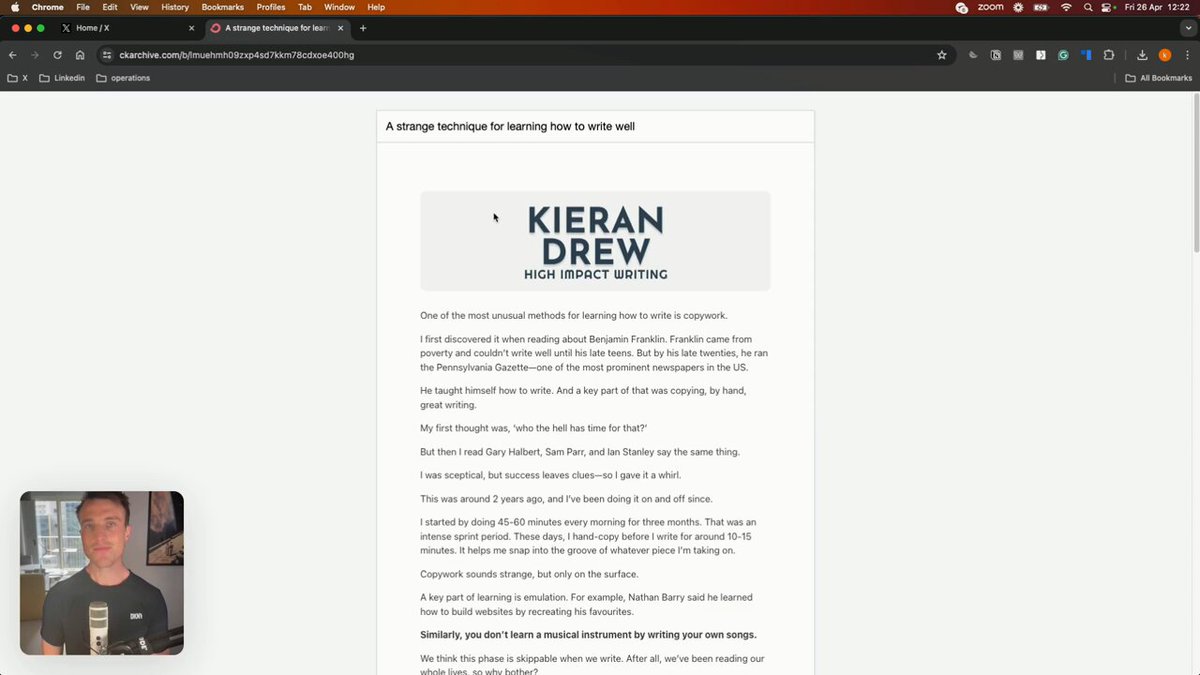How to write emails that don't suck
To scale your business, you must know how to sell through email.
You can’t rely on social media or cold outreach. And if you want a great long-term relationship with your reader, neither can you use manipulative sales tactics.
You need to send emails that build reputation and relationships just as much as your revenue.
So today, I’m going to run you through how I write sales emails using the SLAP technique—including a video breakdown of one I sent this Sunday that grossed $5,136 (it took 45 minutes to write).
SLAP stands for story, lesson, action, P.S.
The idea is simple. Before you sell, you teach. Before you teach, you tell a story. This way everyone wins.
Start with a story
Put yourself in your reader’s shoes.
They’re subscribed to twenty other people from your niche and are bombarded with emails 24/7. They’ve got more choice for their attention than Leonardo Dicaprio at an all-girls college.
But today’s your lucky day—they’re giving it to you.
Maybe you had an intriguing subject line. Perhaps they look out for your name. Either way, they click open your message and…
Boom:
It sounds like everyone else.
You’re ‘trying to describe their pain points.’ You’ve opened with a line like, ‘How often do you x?’ or, ‘One of the worst things about y is z.’
I’m sure some people will read, but I can tell you one thing right now:
Few will remember.
Morgen Housel once said the best story wins. Well, in our space, the best storyteller wins. People don’t remember facts; they remember stories. And it only takes a couple of generic emails for you to sink into the sea of ever-increasing noise.
Good luck climbing out of that cesspit.
I’m not suggesting you need to write a novel for every email you send.
But you must get in the habit of setting the scene.
Sometimes that’s just a few lines. Sometimes it’s the entire email. Sometimes it’s a personal story. Sometimes it’s about them or someone else. Sometimes it’s silly. Sometimes it’s serious. Sometimes it's a customer question or perhaps just your favourite quote.
The important part is that you make your reader feel something. Ideally, with something they haven’t seen before. At a time of perpetual scrolling-induced numbness, it's great to make this promise with your content:
Hey, I respect your attention. If you open my stuff, I’ll serve up something interesting regardless of whether you buy.
Leave a lesson
I’m not suggesting you give away the blueprint—people read to be entertained more than educated anyway. But it helps to sneak in a tip or two to make your reader feel like the three minutes you spent together wasn’t just you trying to get into their pants.
And sure, some entrepreneurs say never teach in emails.
Free value doesn’t work! That’s what your offer is for! If you teach, why will they buy!
But come on, let’s use our brains.
Say 1,000 people read your email, and 10 buy. That’s 990 who didn’t. Does this mean they aren’t important?
Hell no.
They’re either not ready, or they don’t trust you—both valid reasons to show you actually care. So before you send, ask:
Have I said something that shifts how my reader sees, thinks, feels, or acts?
If not, drop in a useful tidbit. I’ve given you a few examples in the video below.
(Call to) Action
I removed the ‘call to’ because SLCP ain’t as catchy. I won’t dive too much into this except to say one thing:
Please make a request.
Even if you’re not selling, ask them to do something. Tell them to hit reply. Or click a link. Or have a think.
This encourages your reader to engage. It also makes you less of a p*ssy. I used to be terrified of pitching but it’s just a matter of practice—nobody will promote your business if you first don’t promote yourself.
Wrap up with a P.S.
The P.S. is for those who skip the email—almost everyone.
Your job here is to take another stab at winning the click.
It’s usually a few sentences summarising your email. With more education-based emails like these, you can stick to your generic template P.S., but with a sales email, get creative by reinforcing the big idea.
And look, this might sound like work.
It may even make you less money than a straight-up pitch.
But we’re writers.
And our greatest asset is our reputation. Even if you’re just here to get rich, reputation is like the engine of your car. You can’t see it, but it’s the power behind all progress—if it’s screwed, you ain’t getting anywhere.
Anyway, I sent a SLAPin’ email on Sunday promoting a friend’s product. I’ve made a short video breaking down the copy.
You can watch it here:
|
About Kieran
Ex dentist, current writer, future Onlyfans star · Sharing what I learn about writing well, thinking clearly, and building an online business

